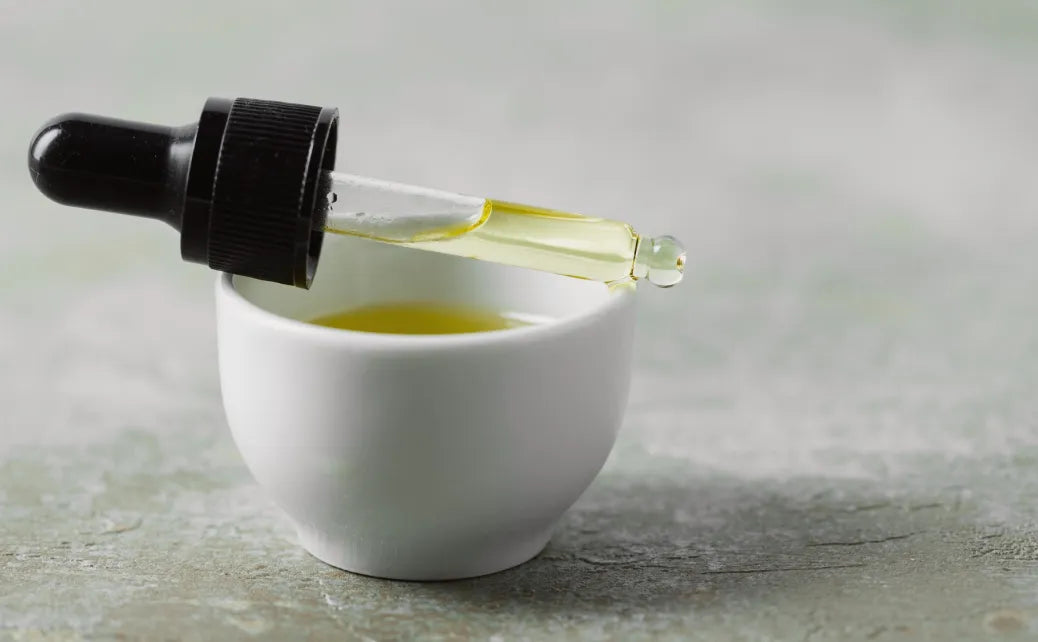Trace Minerals
A small amount goes a long way, trace minerals or micronutrients are the essential elements that we human beings need to sustain a day-to-day life in a solid state of health. These nutrients can be found both on the earth and in our foods. And sometimes we beautifully pick up these nutrients from the earth, as we cannot create them ourselves.
Trace Minerals of
Resin and Liquid Shilajit
Resin and Liquid Shilajit
Essential nutrients are vital for our health and proper functioning – and Shilajit is packed with them! Only a small dose of shilajit in any form can supplement your body lacking any micronutrient deficiency.
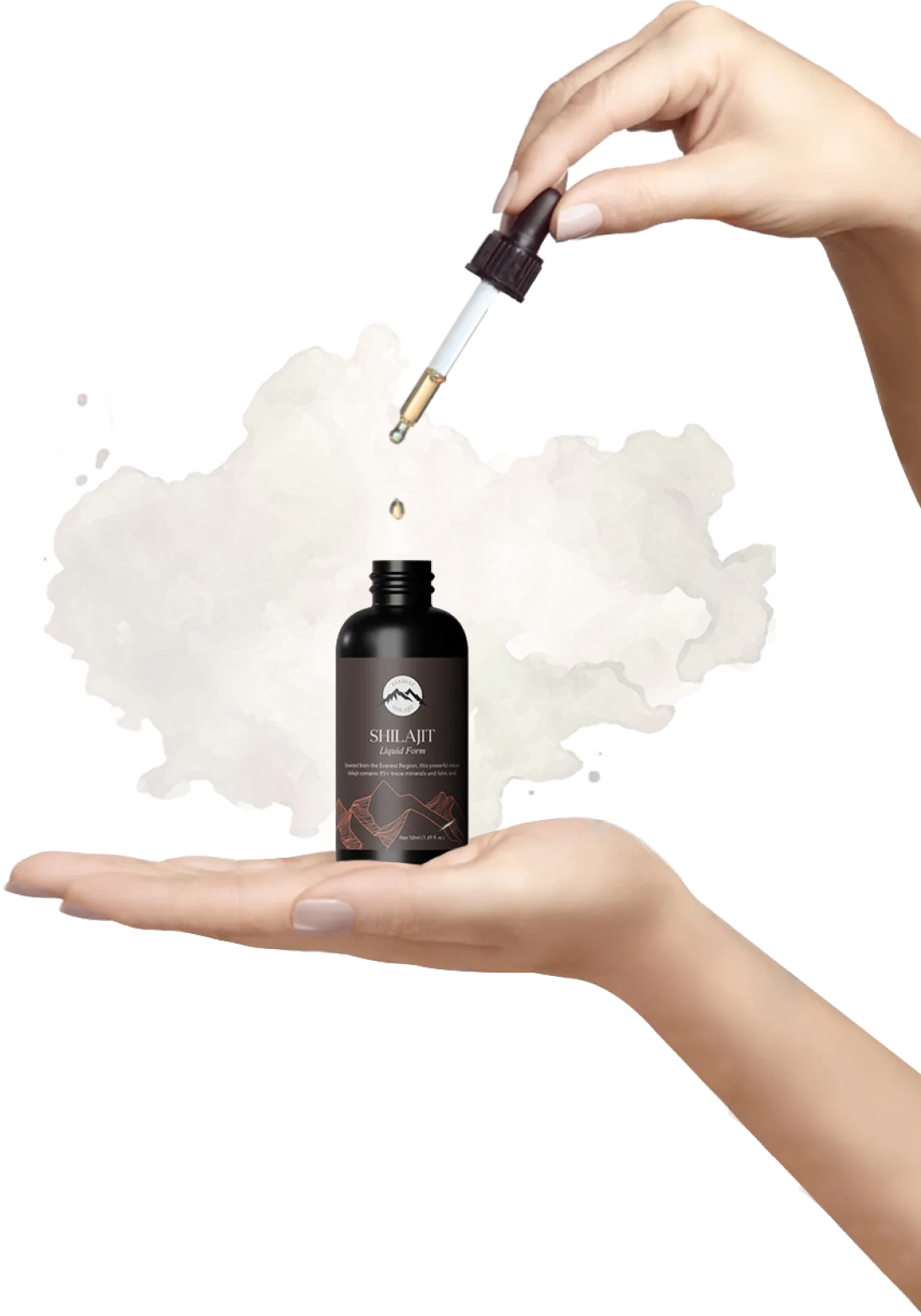
Trace Minerals of
Everest Shilajit Mixed With Mad Honey
Everest Shilajit Mixed With Mad Honey
Everest Shilajit and Mad Honey are both rich in trace minerals that actively increase cell growth rate and body function. Together, this powerful combination delivers an impressive blend of essential micronutrients, only to amplify the health goals.
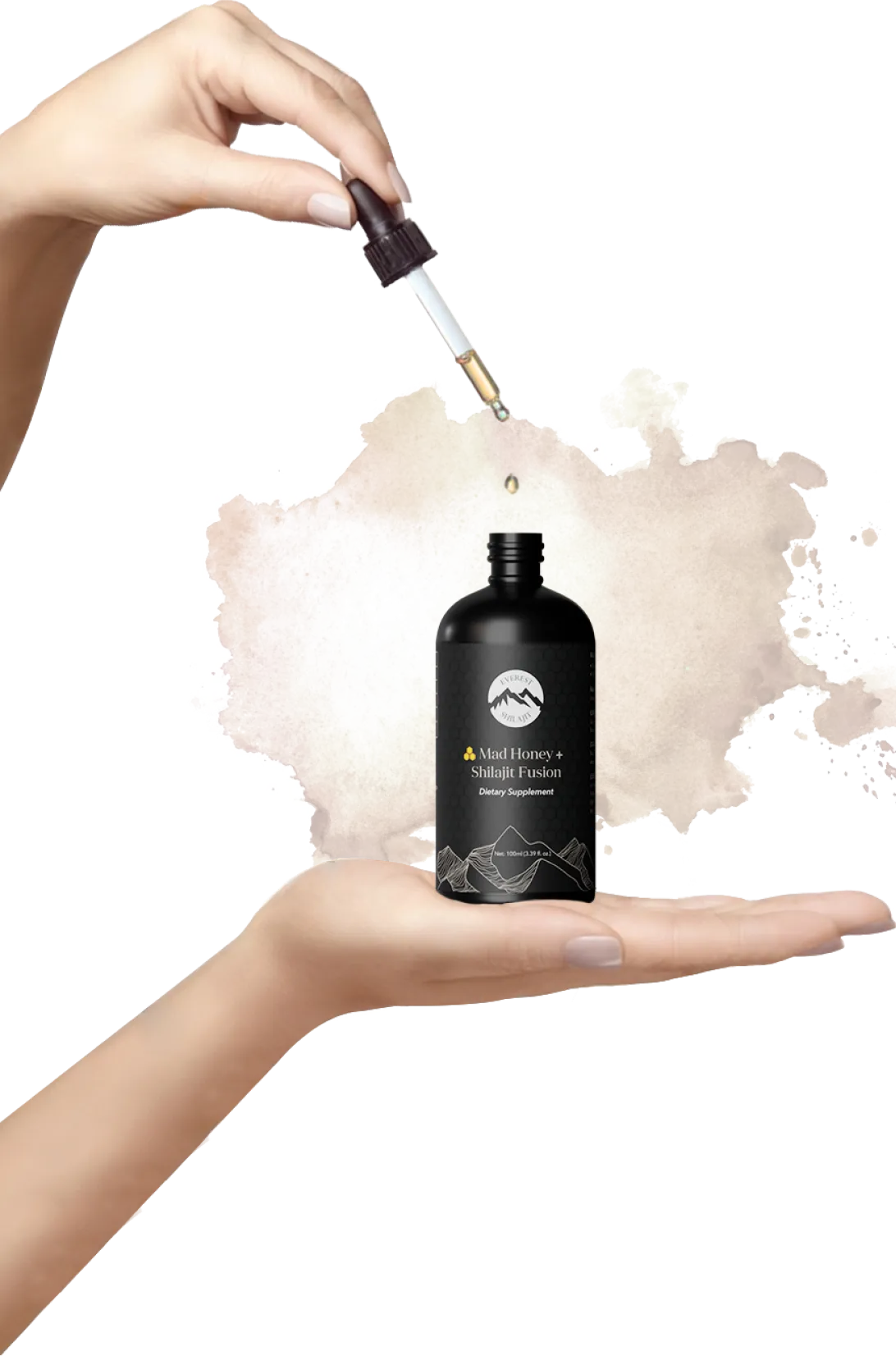
FDA Disclaimer: The information provided on this website (and any related materials) has not been reviewed or approved by the FDA and is not meant to substitute the care or guidance of a physician or other qualified healthcare provider. Shilajit is not designed to diagnose, treat, cure, or prevent any disease. While it contains trace minerals, the small serving size makes it unsuitable for addressing mineral deficiencies or conditions related to mineral imbalances. This article is intended solely to explain the role of minerals in supporting body metabolism.
Dietary Reference Intake (DRI) table
|
Mineral |
Recommended Daily Intake (Men) |
Recommended Daily Intake (Women) |
Importance |
Main Functions |
Availability in Modern Diet |
Dietary Sources |
|---|---|---|---|---|---|---|
|
Potassium |
>4700mg |
>4700mg |
High |
Electrolyte balance, heart health, nerve signaling |
Low |
Bananas, leafy greens, potatoes |
|
Sodium |
1500-2300mg |
1500-2300mg |
High |
Electrolyte balance, nerve function, cell function |
High |
Table salt, pink salt, seafood |
|
Calcium |
1000-2500mg |
1000-2500mg |
High |
Bone strength, cell function, hormone regulation |
High |
Dairy, fish, leafy greens |
|
Magnesium |
>420mg |
>320mg |
High |
Cellular functions, DNA synthesis, biochemical reactions |
Low |
Dark chocolate, leafy greens |
|
Phosphorus |
700-4000mg |
700-4000mg |
High |
Energy production, fat metabolism, DNA synthesis |
High |
Eggs, red meat, dairy |
|
Iron |
8-45mg |
8-45mg |
Medium |
Blood cell production, protein synthesis |
High |
Eggs, root vegetables, lentils or beans |
|
Zinc |
11-40mg |
8-40mg |
High |
Immune support, detox, growth, DNA synthesis |
Medium |
Oysters, red meat, legumes, dairy |
|
Copper |
0.9-10mg |
0.9-10mg |
Medium |
Biochemical reactions, blood cell function, nutrient transport |
Medium |
Organ meats, leafy greens, shellfish |
|
Selenium |
55-400mcg |
55-400mcg |
Medium |
DNA function, immune support, reproduction |
Medium |
Mushrooms, seafood, Brazil nuts |
|
Molybdenum |
45-2000mcg |
45-2000mcg |
Medium |
Enzyme activity, detoxification, metabolism |
Low |
Legumes, garlic, leafy greens |
What is the difference between organic and inorganic trace minerals?
Organic trace minerals, often called fulvic minerals, are trace elements bound by plants to natural substances like fulvic acid, transforming them into highly absorbable forms. These "organic" minerals match our body's chemistry, unlike inorganic minerals, which are less bioavailable and can block digestion.
Technically, all trace minerals are inorganic by definition. However, plants naturally convert them into bioavailable forms, making them essential for our health. Depleted soils, pollution, and modern lifestyle, altogether cater to a life leading to deficiencies that impact our vitality. Trace minerals are the unknown architects of our existence that keep our body system running smoothly. Without them, our bodies falter and may slip into imbalance and efficiency.
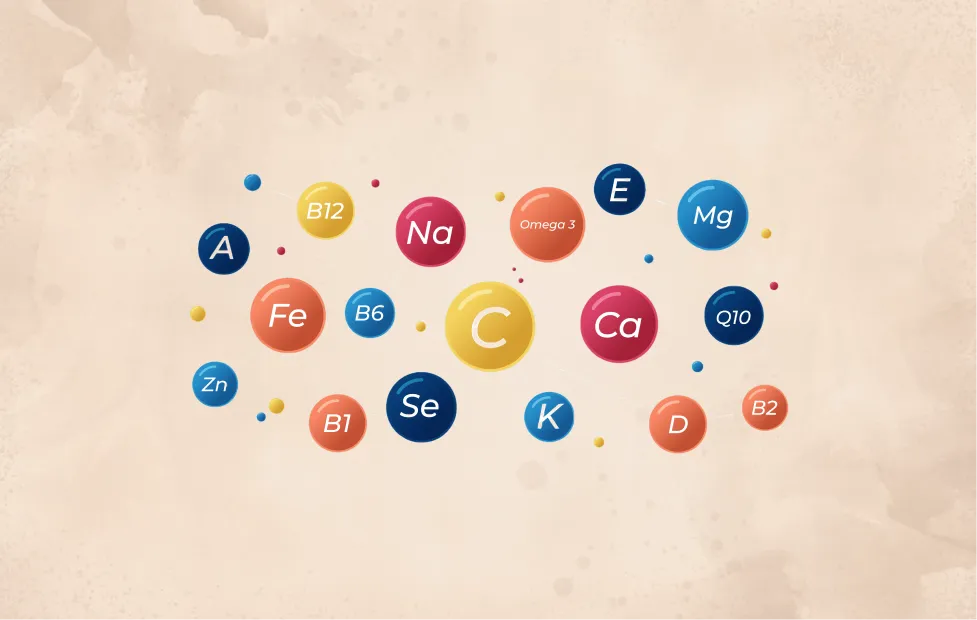
These elemental powerhouses restore our good faith in the incredible capabilities of our bodies, the abilities we often overlook and undervalue. They remind us of the wonders our bodies are capable of achieving when nourished and cared for.
Where have all the trace minerals gone?
Trace mineral deficiencies, often called "hidden hunger," affect over 2 billion people globally. Modern soil depletion, poor diets, medications, stress and fluid loss disrupt the mineral balance. Even healthy diets may lack nutrients due to poor soil, while processed foods and stress worsen deficiencies.
How Essential Nutrients Are Classified & Why We Need Them
Macronutrients and Micronutrients are the two building blocks of life.
Macronutrients
Macronutrients are the type of nutrients that are required in large quantities for the growth and development of our body. Primarily we consume macronutrients like carbohydrates, proteins, and fats, which each contribute to bodily function on their own.
But only counting your macros is not enough if you don’t combine them with vital micronutrients. Your body simply won’t absorb it, meaning all your efforts of eating consciously with regard to macronutrients will go in vain.
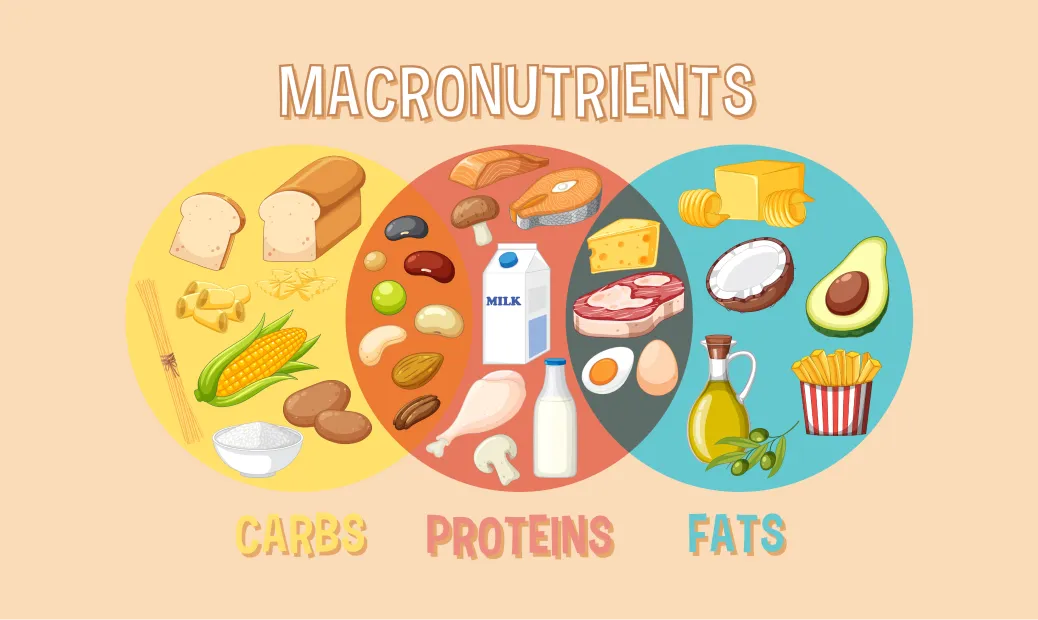
Micronutrients
The lesser-known nutrient class – trace minerals are yet to be treated as equal, and with respect. Its deficiency is as damaging to your body as any major mineral deficiency. A diet isn’t truly healthy just because it meets your calorie goals. Nutrition goes well beyond simply counting calories or satisfying hunger.
True health stems from a good mix of macronutrients and essential micronutrients working together, making your plate look like a colorful rainbow.
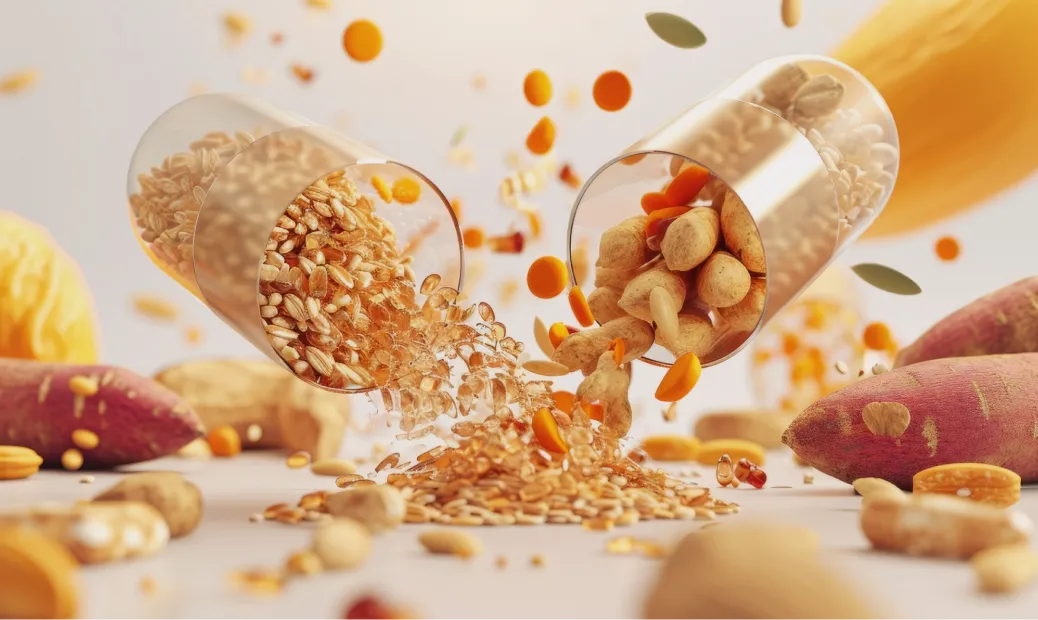
Trace Minerals vs Vitamins
Vitamins and minerals come from the foods we eat and help our bodies perform and run smoothly. Fat-soluble vitamins are stored in the body, while water-soluble ones need to be recharged regularly.
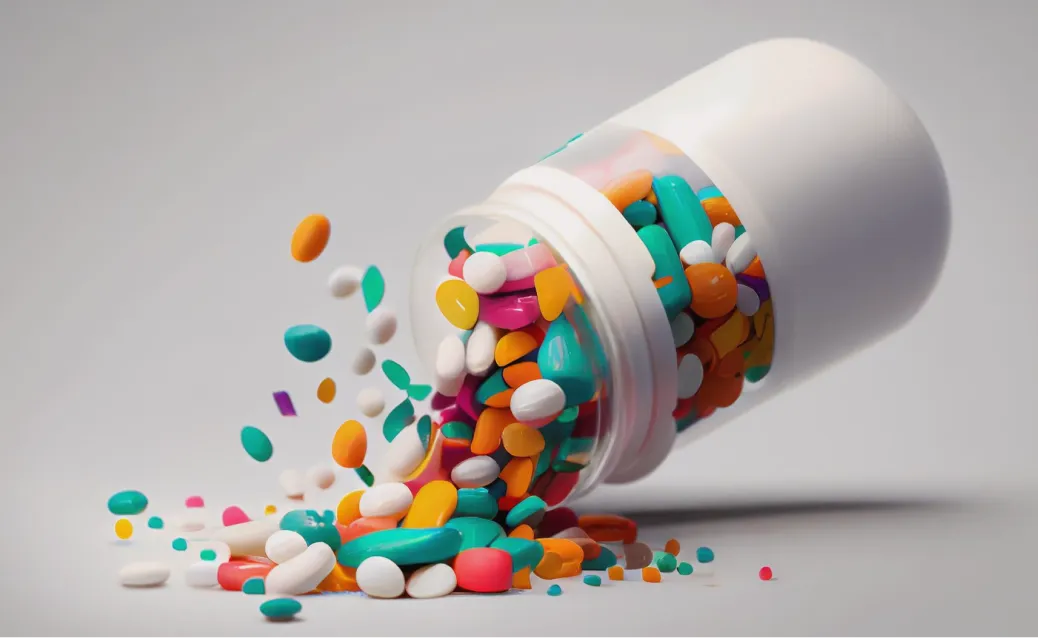
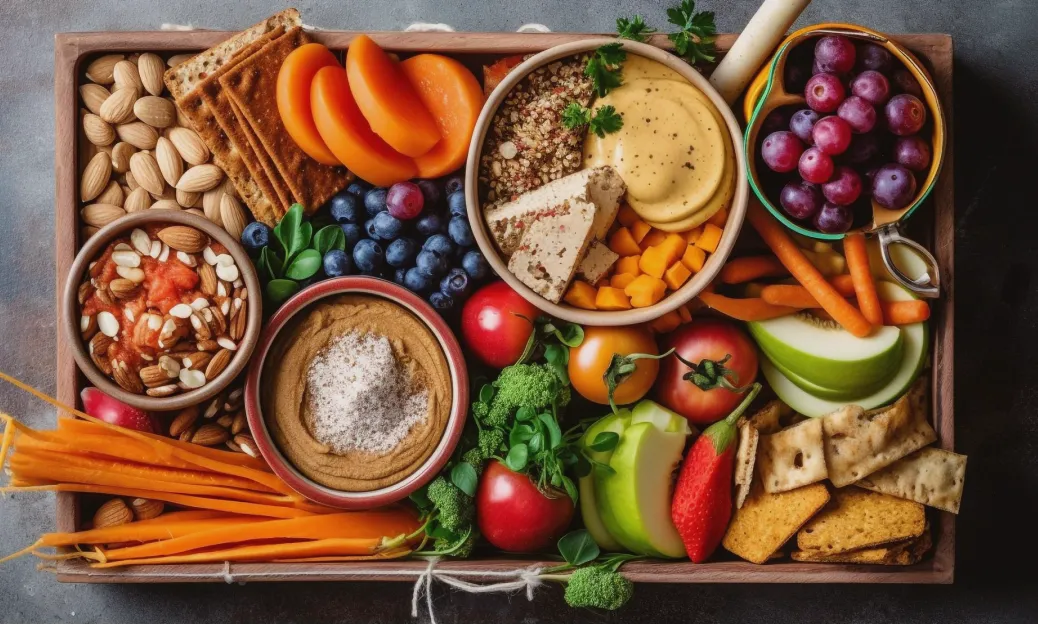
But without minerals, the vitamins that we consume cannot metabolize on their own. These two nutrients must work together to achieve sturdy and enviable health.
What is the difference between trace minerals and vitamins?
Trace minerals like iron, zinc, and selenium are important for enzyme activation, immune support, and nutrient absorption, they also accelerate the potency of vitamins.
Vitamins, like A, C, and D, regulate metabolic processes, energy production, and immune function, but their impact depends on adequate mineral levels. So getting the right balance of trace minerals helps your body make the most of the vitamins you're consuming by boosting their bioavailability.
A Brief Word on Trace Mineral Absorption
Choosing trace minerals in a highly absorbable form, like plant-based options, means better bioavailability, plus allows the body to fully benefit from them. Some foods or vitamins, like vitamin C, can help the body absorb these minerals better, while others, like certain grains or tea, can make it harder. Eating a variety of healthy foods helps the body absorb the trace minerals properly.
What is Bioavailability?
Bioavailability means how much of what you eat actually gets into your blood and helps your body. Eating the right trace minerals isn’t always enough because some nutrients can help your body absorb them better, while others can make it harder.
Is it easier to absorb plant based minerals?
Yes, we absorb trace minerals from plants and food much better than from other sources. This is because the minerals in plants are naturally combined with substances like organic acids and salts, which make them easier for the body to take in. Plus, the mineral particles in plants are smaller, so they’re absorbed more easily.
Trace Minerals That We Need Every Day & Their Health Benefits
There is a wide range of trace minerals vital for our health, but many of them are often missing or consumed in inadequate amounts in our diets.
It’s unavoidable to understand how each trace mineral supports our health and everyday life. These tiny nutrients play a big role in how we feel and function, and knowing where to get them can make all the difference.
Macro Trace Minerals
Macro trace minerals are the minerals your body needs in larger amounts to stay healthy. Minerals like calcium, magnesium, potassium, and sodium help keep your muscles, heart, and nerves working properly.
Even though we need these in larger amounts, you still need to watch the amount you are consuming. Because too much or too little can mess with how your body functions. The good news is that we can easily get our hands on these minerals through a rainbow plate of foods, so you don’t have to stress over it.
Electrolytes are trace minerals that help regulate fluid balance and the electrical charge in our body and cells. However, not all trace minerals have this role.
Five electrolytes in our bodies: Potassium, sodium, chloride, magnesium, and calcium
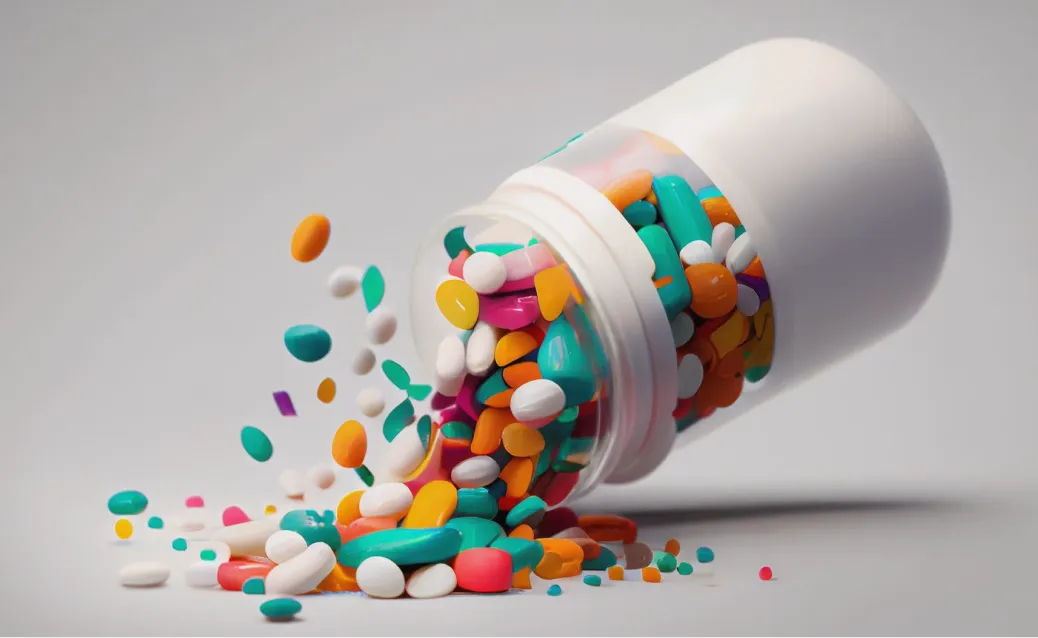
Five electrolytes in our bodies: potassium, sodium, chloride, magnesium and calcium.”
1. Potassium
Potassium helps keep your muscles and heart in good shape by balancing fluids and supporting proper nerve function.
Shilajit, which is rich in potassium, can give you that extra support to maintain healthy energy levels and keep everything working aptly, especially when you're feeling drained.

Did You Know?
Around 98% of people don’t get enough potassium in their diet. This mineral is required for heart health, muscle function, and fluid balance, yet most of us fall short.
The recommended daily intake is around 3,400 mg for men and 2,600 mg for women, but many only consume about half of that.
Absorption and Bioavailability
The bioavailability of potassium in whole fruits and vegetables can be as low as 50% to 60%.
While these foods are often recommended for boosting potassium levels, there’s limited evidence showing a direct link between higher fruit and vegetable intake and increased serum potassium levels.
Dietary Resources
- Bananas
- Potatoes
- Sweet potatoes
- Spinach
- Avocados
- Dried Apricots
- Oranges
- Yogurt
2. Sodium
Sodium often gets a bad reputation, but your body actually needs it to function properly. The body needs a small amount of sodium to maintain fluid balance, support nerve function, and ensure proper muscle contractions. It keeps your energy and hydration levels in check. Without enough sodium, you would feel weak, dizzy, and totally drained.
Most people think of sodium as just “salt,” but when paired with minerals like potassium and magnesium (also found in Shilajit), it keeps your body in sync. Instead of just retaining water, your cells actually absorb and use it the right way.

Did You Know?
The recommended daily intake is 2,300 mg, but most people consume nearly 50% more due to processed foods.
Low sodium levels can cause fatigue, dizziness, and muscle cramps, while excess intake may contribute to high blood pressure.
Absorption and Bioavailability
Sodium is easily absorbed in the body with the help of sodium-potassium pumps, which keep cells balanced. However, too much sodium without the right nutrients can cause water retention, dehydration, or stress on the heart.
Shilajit makes sodium more effective because it contains fulvic acid, which helps transport minerals into cells. This means your muscles, nerves, and brain get just the right amount of sodium, improving hydration, energy, and overall function.
Dietary Sources
- Cottage Cheese
- Vegetable Juice
- Salad Dressing
- Broths and Stocks
- Canned Vegetables
- Tortillas
- Soups
- Pickles
- Baked Beans
3. Calcium
Calcium is known for building strong bones and teeth, but its benefits go far beyond that. This vital mineral plays a key role in muscle contractions, nerve signaling, and blood clotting. Without enough calcium, you might experience muscle cramps, weak bones, or irregular heartbeats. Shilajit naturally contains calcium that supports your body in a unique way.
The calcium in Shilajit supports strong bones, steady heart rhythm, and efficient mineral absorption, keeping your muscles, nerves, and skeletal system healthy.

Did You Know?
A significant number of adults struggle to meet their daily calcium needs, putting them at increased risk for weakened bones and osteoporosis.
For most adults, the recommended daily intake is around 1,000 mg, with higher needs (about 1,200 mg) for postmenopausal women and older adults. Despite its importance, many diets provide only a portion of these essential levels.
Absorption and Bioavailability
Calcium is primarily absorbed in the small intestine, and its uptake is greatly enhanced by vitamin D. However, factors like age and dietary inhibitors (such as oxalates in certain greens) can impact how much your body actually utilizes.
Shilajit makes calcium more effective because its fulvic acid helps transport minerals into cells, ensuring that your skeletal and muscular systems function at their best.
Dietary Sources
- Milk
- Yogurt
- Cheese
- Fortified plant-based milk
- Tofu
- Leafy greens (e.g., kale, collard greens)
- Sardines (with bones)
- Almonds
- Fortified orange juice
4. Magnesium
When you exercise, your body may need more magnesium than usual. This mineral helps move blood sugar into your muscles and clears out lactate, a compound that can build up and cause fatigue. Studies show that magnesium supplements can enhance physical performance, especially in older adults and those with a deficiency.
Shilajit has 20-30 gm of magnesium in its content, which also regulates low mood and brain function. Low levels are linked to a higher risk of depression.

Did You Know?
Professional cyclists who took 400 mg of magnesium daily for three weeks experienced better muscle recovery and less damage after intense races.
An 8-week study found that taking 500 mg of magnesium daily significantly improved depression symptoms in people with low magnesium levels.
Absorption and Bioavailability
Magnesium is absorbed in the small intestine, but factors like age, diet, and stress levels can impact how well your body uses it. Pairing magnesium with other nutrients, such as vitamin D, can enhance its absorption and benefits.
Dietary Sources
- Bananas
- Spinach
- Nuts and seeds
- Whole grains
- Tofu
- Dark chocolate
- Fatty fish
- Legumes
5. Phosphorus
Phosphorus, the second most abundant mineral in your body after calcium, is essential for strong bones, energy production, and muscle function. It helps filter waste, repair tissues, and store energy while working with vitamin B, vitamin D, magnesium, and zinc. Imbalances can cause fatigue, joint pain, or heart issues.
Shilajit, a mineral-rich resin, provides bioavailable phosphorus that supports energy metabolism, cell regeneration, and bone health, helping maintain balanced phosphorus levels naturally.

Did You Know?
Too much phosphorus (from processed foods) can lead to heart and bone issues, while too little can cause fatigue and muscle weakness.
Phosphorus works alongside vitamins B, D, and minerals like magnesium and zinc to maintain overall body function.
Absorption and Bioavailability
Phosphorus is easily absorbed by the body from food. However, it’s important to keep the right balance between calcium and phosphorus for strong bones. Too much phosphorus and not enough calcium can lead to health problems over time.
Dietary Sources
- Meat and poultry
- fish
- milk and other dairy products
- eggs
- Legumes, mostly lentils
- Nuts, mostly cashews
- Seafood
- Sunflower seeds and pumpkin seeds
Micro Trace Minerals
Micro Trace Minerals are needed in smaller amounts but even there we miss the mark for their recommended daily consumption, here are such trace minerals that we need to think about including in our daily diets:
1. Iron
A lack of iron can lead to fatigue, weakness, and difficulty concentrating due to insufficient oxygen being transported to your muscles and tissues. It can reduce physical performance, endurance, and recovery. Iron deficiency also weakens the immune system, increasing the risk of infections, and may cause complications during pregnancy.
Shilajit contains 20 to 30 mg of iron, which helps treat anemia by boosting red blood cell production. It also supports energy levels, improves stamina, and strengthens the immune system.

Did You Know?
Did you know that about 20% of the world's population has iron deficiency, especially in women?
Excess iron in the body can be harmful, leading to conditions like iron overload or hemochromatosis, where too much iron builds up in the organs.
Absorption and Bioavailability
Iron from plant-based foods isn't absorbed as easily as from animal sources, but Shilajit can help improve iron absorption due to its rich mineral content.
When paired with other nutrients, like vitamin C, the absorption of non-heme iron (from plants) is enhanced, making it easier for your body to get the iron it needs.
Dietary Resources
- Fortified Grain Cereals
- Beans or Lentils
- Eggs
- Oysters
- Root vegetables
- Broccoli
- Nuts
2. Zinc
Zinc is a vital mineral for immune function, skin health, and cell growth. A deficiency can weaken immunity, slow wound healing, and worsen skin issues like acne. Zinc helps improve immune response, supports skin health, speeds recovery, and aids collagen production, benefiting your body in various ways.
Shilajit, packed with easily absorbed zinc, helps strengthen immunity, improve skin health, and speed up recovery. It can also help treat acne, increase energy, and protect against infections.

Did You Know?
Zinc is the second-most abundant trace mineral in your body, after iron, and it’s present in every cell, supporting countless essential functions.
According to a review of seven studies, taking 80–92 milligrams of zinc per day can shorten the length of the common cold by up to 33%.
Absorption and Bioavailability
Zinc from food is easily absorbed, but factors like age, diet, and overall health can impact how much your body absorbs. Pairing zinc-rich foods with those high in vitamin C can boost its bioavailability, helping your body make the most of this essential mineral.
Dietary Sources
- Meat
- Shellfish
- Chocolate
- Nuts, mostly peanuts
- Seeds
- Legumes
- Eggs
- Dairy
3. Copper
Copper is essential for producing red blood cells, regulating heart rate and blood pressure, absorbing iron, and maintaining bones, connective tissues, and organs like the brain and heart. A deficiency can lead to anemia, weak bones, poor immune function, and problems with heart and brain health.
Shilajit, rich in copper helps with anemia, muscle weakness, and recovery. Its minerals boost energy, support the immune system, and maintain body balance.

Did You Know?
A study found low copper levels in post-menopausal women with low bone density, suggesting copper supplements may help improve bone density.
Copper may help fight cancer cells. A 2019 study showed that copper nanoparticles slowed the growth of pancreatic tumors in mice.
Absorption and Bioavailability
Copper from food is easily absorbed, though factors like age, diet, and certain health conditions can influence how well your body absorbs it.
Copper in Shilajit also improves iron absorption and collagen production, with studies showing it can increase copper levels by up to 40%.
Dietary Sources
- Shellfish
- Nuts
- Seeds
- Whole grains
- Organ meats
- Quinoa
- Dark Chocolate
4. Selenium
Selenium is a key mineral for your thyroid, immunity, and reproductive health. It helps produce hormones, protects cells from damage, and may lower the risk of cancers like breast, lung, and prostate. Plus, it helps repair DNA and keeps you feeling good all in all.
Shilajit contains selenium, which supports thyroid health, boosts immunity, and helps protect against cell damage and inflammation.

Did You Know?
Your thyroid gland holds the highest concentration of selenium in your body. This mineral plays a key role in hormone regulation and may support fertility and lung health.
The recommended daily intake is 55 mcg for adults, but excessive intake above 400 mcg per day can be harmful.
Absorption and Bioavailability
Selenium is best absorbed from plant-based foods, but its levels depend on soil quality. Foods grown in selenium-rich soil contain higher amounts of this essential mineral.
Dietary Sources
- Brazil nuts
- Fish (tuna, sardines)
- Eggs
- Sunflower seeds
- Whole grains
- Chicken
- Mushrooms
5. Molybdenum
Molybdenum is a trace mineral that helps your body break down harmful substances and remove toxins. It also supports enzyme function, digestion, and energy production. Even though your body needs only a tiny amount, it plays a big role in keeping you healthy.
Shilajit contains bioavailable molybdenum, which helps with metabolism, detoxification, and energy levels. It supports enzyme activity, keeping your body balanced and free from harmful toxin buildup.

Did You Know?
Molybdenum is found in many foods, so deficiency is rare. Without it, toxins can build up, and some genetic conditions may cause serious health issues.
Adults need 45 mcg daily, which most get from food. Too much (over 2,000 mcg per day) may be harmful. Supplements are usually not needed.
Absorption and Bioavailability
Molybdenum is well absorbed from food, with bioavailability ranging from 50% to 90%. Unlike other minerals, its absorption is not significantly affected by dietary factors, making deficiency uncommon.
Dietary Sources
- Lentils
- Kidney beans
- Oats
- Liver
- Peas
- Whole grains
- Dairy products
Possibly Essential (& Highly Controversial) Trace Minerals
There are several trace minerals that our bodies show a strong affinity for, but their essential role hasn't been fully confirmed.
Lithium
Aluminum
Arsenic
Strontium
Germanium
Lead
Rubidium
Tin
While they are involved in various chemical processes or found accumulating in our bones and muscles, there's no clear evidence showing that we actually need them, as no deficiency symptoms have been observed.
In some cases, animal studies have shown that deficiencies in these minerals can lead to growth issues or weaknesses in animals like goats, cows, and chickens. This has raised doubts among scientists about whether they might be essential for humans as well.
9 Strategies For Improving Your Trace Mineral Balance
The Do’s and Don’ts of following a trace-minerals balanced diet can seem overwhelming and complicated. You may feel like you've done everything right, but something still doesn’t seem quite right.
Often, your body sends signals that we tend to ignore or brush off as just having a bad day, but it's important to understand that neglecting trace minerals can eventually lead to bigger life-detrimental issues. What you need is a plan, and for that plan to succeed, you’ll need some strategies.
1. Eat More Raw Whole Foods
When foods are eaten raw, they retain all their natural vitamins, minerals, and enzymes, which cooking can sometimes break down or reduce. For example, foods like leafy greens, carrots, and fruits are rich in essential minerals like calcium, magnesium, and potassium. These nutrients can easily be lost when heated or processed.
Many raw foods also provide fiber, which helps with digestion and allows minerals to be absorbed more effectively by your body. Another advantage of whole raw foods is that they are often lower in added sugars and unhealthy fats compared to processed or cooked foods.
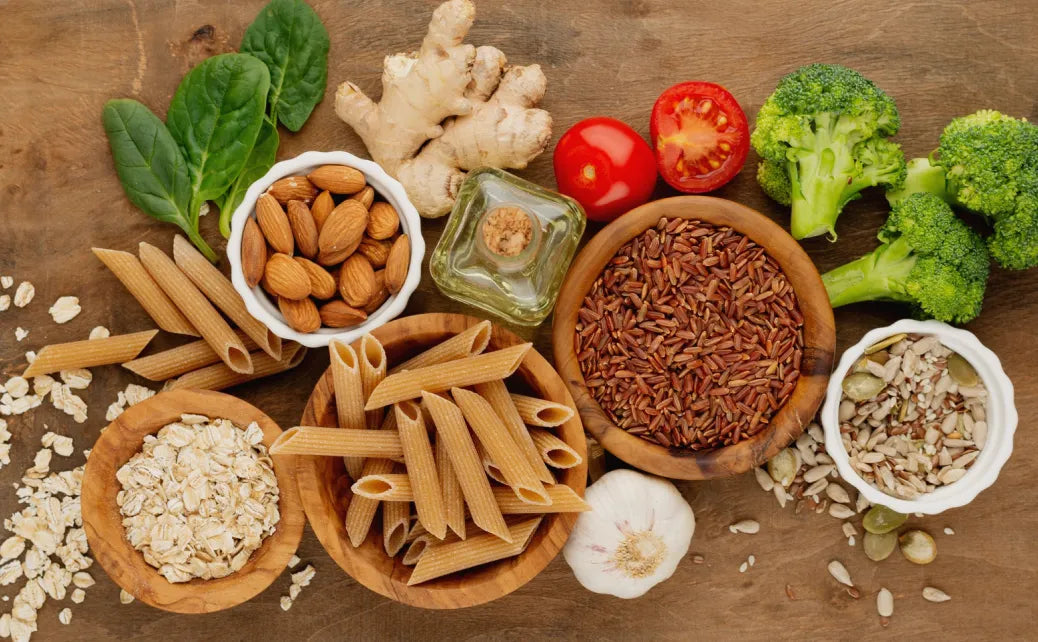
2. Probiotics
Gut health is super important for our immunity since 75-80% of our immune system starts in the gut. Good bacteria help us digest food and absorb nutrients, while bad bacteria can cause bloating, acidity, and other stomach problems. Over time, stress and bad eating habits can reduce the digestive enzymes in our body, causing issues like bloating after eating certain foods, like vegetable juice.
Bad bacteria love sugar, junk food, and processed foods, so cravings for these foods might be your body asking for more fuel for those bad microbes. To help the good bacteria in our gut, we need prebiotics in our diet. Instead of buying expensive probiotic drinks, you can easily make your own at home using beetroots, mustard seeds, and salt.
Foods like yogurt, kefir, sauerkraut, and kimchi support gut health, improving your body’s ability to absorb minerals efficiently.

3. A Paleo ‘Hunter Gatherer’
Don’t you feel a bit envious of our grandpas and grandmas, who seem so mighty healthy even in their old age, living life to the fullest? It is because they knew the basics. They ate like our ancestors, sticking to simple, natural foods straight from the land, without all the processed stuff we see today.
You can focus on whole, natural foods like fresh vegetables, fruits, nuts, seeds, and lean proteins while avoiding processed junk food. When you eat clean, unprocessed foods, your body gets these trace minerals naturally.
For example, leafy greens are packed with magnesium, while nuts and seeds provide a good dose of zinc. Unlike modern processed foods that have zero nutrient calories, the hunter-gatherer diet doesn’t strip away these nutrients.

4. Super Foods
Eating superfoods is like giving your body the VIP treatment it deserves. Superfoods like leafy greens, nuts, seeds, and colorful fruits are packed with tiny but powerful trace minerals.
- Cruciferous vegetables like broccoli, radish, cauliflower, kale, mustard greens, turnips, etc.
- Nuts like almonds, pecans, walnuts, macadamia nuts, etc
- Seeds like sunflower and pumpkin seeds, chia seeds, hemp seeds and flaxseeds
- Berries
- Green tea
- Eggs
- Ginger
- Turmeric
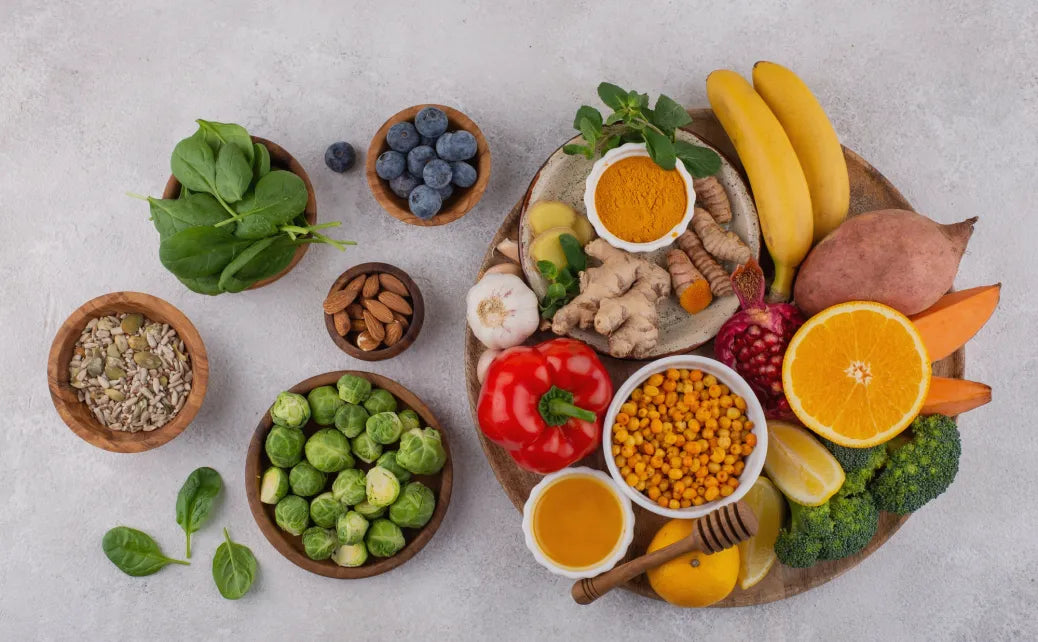
5. Intensive Supplementation
If you’re not getting enough trace minerals from food, supplements can be a solid backup plan. Think of them as a way to connect the dots to your whole diet, especially if your diet skips certain foods or you’ve got specific deficiencies. They can give you a boost of essentials like zinc, magnesium, or selenium when you’re running low.
But here’s the catch: not all supplements are created equal. Some are synthetic and just don’t work as well. Plus, they can mess with your stomach and leave you feeling off. The better option? Go for plant-based ones. They’re closer to how your body naturally absorbs stuff from food and are easy on the gut.
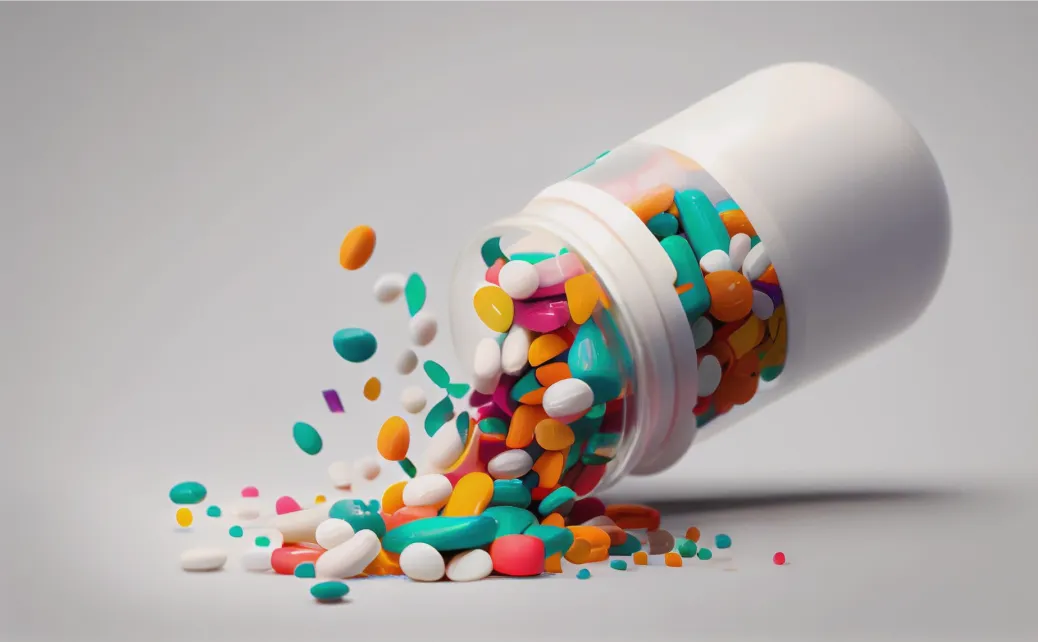
6. Eat a colorful plate
“Eat the rainbow” - fill your plate with diversified natural fruits, and vegetables. Start mixing a little bit of every stock of veggies and seasonal fruits that you have in your fridge, this way you will rarely miss out on the essential trace minerals.
Here’s how they break down:
- Chlorophyll (Green): Found in leafy greens like spinach and kale. High in magnesium, crucial for energy production, muscle relaxation, and bone health.
- Beta-Carotene (Orange): Found in carrots, pumpkins, and sweet potatoes. Linked to zinc, which supports immune function, skin repair, and vision.
- Lycopene (Red): Found in tomatoes, red peppers, and watermelon. Associated with selenium, a potent antioxidant that protects cells from damage and supports thyroid health.
- Anthocyanins (Purple/Blue): Found in blueberries, blackberries, and eggplant. Linked to manganese, which helps bone formation, metabolism, and brain function.
- Flavones (White): Found in garlic, onions, and cauliflower. Rich in sulfur, essential for detoxification and collagen production, keeping skin and joints healthy.
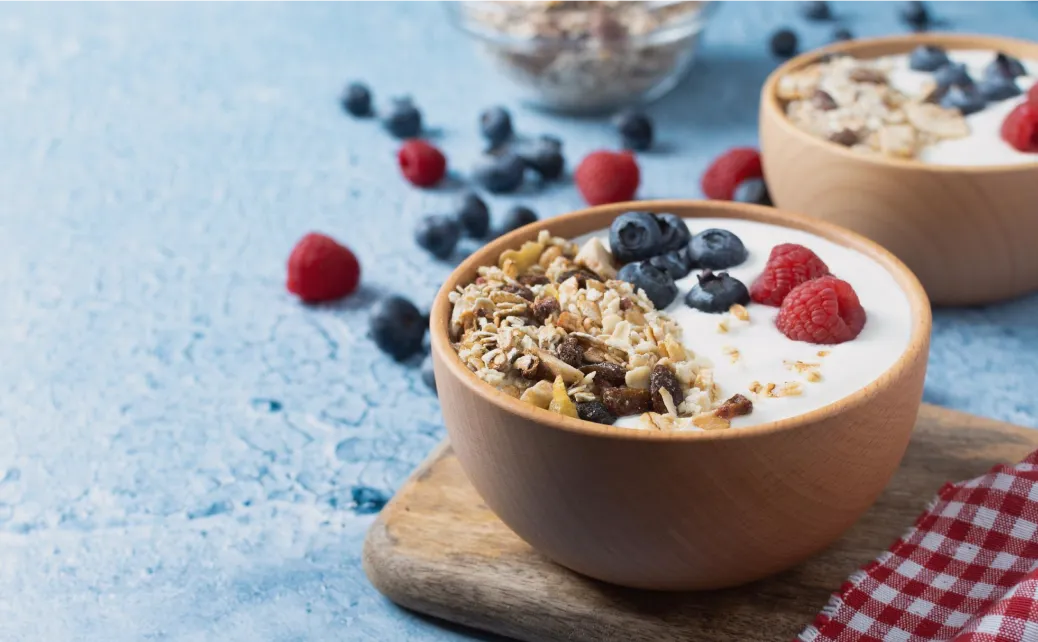
7. Mindfulness Meditation
A healthy mind results in a healthy body, there’s no denying that. Yet, we often focus so much on physical health that we end up draining and straining our mental The truth is, if your mind isn’t in the right place, everything else can fall apart. Even science agrees with this now.
Only a healthy body can properly absorb trace minerals and make the most out of them. Meditation, especially mindfulness meditation, is a great way to do this.
It helps you relax, notice the sensations in your body, and simply accept them without reacting. Observation doesn’t come with reaction!
This practice allows your body to recharge with positive energy, reducing negativity naturally. Slowly, it even improves your relationship with food; make healthy choices.

8. Regular Exercise
Regular exercise does wonders for your body, including keeping important minerals in balance. Weight-bearing exercises, like walking or strength training, help your bones stay strong by holding onto minerals like calcium and phosphorus.
Plus, exercise improves blood flow, making sure minerals like magnesium and zinc get to all the right places.
Moderate exercise is way better for you than overdoing it with intense or irregular workouts, which can actually stress your body and throw things off balance. Stick to a consistent routine, and your body will naturally hold onto those vital minerals to keep you healthy and feeling alive!

9. Fulvic Acid
Found in natural substances like humus (organic soil matter), shilajit, and even rock sediments, fulvic acid is a powerful compound that enhances nutrient absorption in the gut.
It has a natural ability to bind with trace minerals, making it easier for your body to absorb them. Fulvic acid also supports a healthy gut environment by balancing pH levels, which helps your good bacteria thrive.
Beyond digestion, it might even give your brain a boost by improving how your body processes essential nutrients. It’s all about helping your body absorb more of what it needs to stay strong, healthy, and energized.
